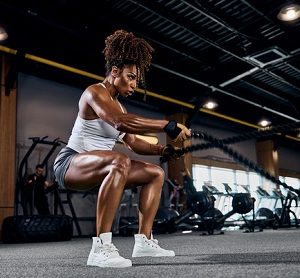Running Injury Prevention
Running Safe to Running Smart
The benefits to running are quite obvious and are the focus of many health forums and magazine articles. I’d like to focus on an important matter that goes hand in hand with the enjoyment and pleasure of running: how to avoid injuries. Realistically it hurts to run; you aren’t really going to enjoy it.
When starting out, progress at a pace that is comfortable to you. Remember that fitness levels and training intensity vary according to different individuals, so try to find something closest to your capabilities. Remember, no one ever set out to win a marathon on their first day of running.
You should always allow yourself time to recover! Just like any form of strength or endurance training, your body needs time to repair
and rebuild between sessions. Rest and recovery is even more important after your initial foray into it. Many people enter running all gung ho and excited only to cause themselves pain, discomfort, and/or an overuse injury. Starting out, it will be best to adopt a one day running, one or two day rest approach to allow your body to build up to your personal training goals.
Always listen to your body! By running within your capabilities, you will not only enjoy running more, but you’ll also receive more from it. It is best to run smoothly and easily until you are reasonably fatigued. To accomplish this, it is usually easiest to run by time and not by distance. While running if you feel unnecessary tension or uncomfortable pain in any part of your body, slow to a more comfortable pace.
There are many different basic exercises runners should be performing to stabilize the joints for running programs. Hire a personal trainer if you are new to exercise or running to build a program that will ensure effective training.
Stretching programs are just as important to keep you injury free. Here are 5 simple stretches that should be done after a run to prevent sports-related injuries:
- Quadriceps Stretch. Standing straight while balanced near a stationary object, reach back and grab the front of the ankle. Draw the heel to your glute while pressing the hip forward. Ensure you keep the knees in line with one another. Repeat with opposite leg.
- Hamstring Stretch. Sit on mat or floor with knees bent. Position towel under the arch of the foot , grasp the ends of the towel. Roll onto your back with you knee bent while raising the leg above yourself maintaining grip on towel. Slowly straighten the leg until the knee is straight. Hold stretch. Repeat with opposite leg.
- Piriformis Stretch. Lay on your back with both knees bent and feet flat on the floor. Cross right ankle over the left knee. Grab yo
ur left thigh and pull the legs towards your chest. Repeat with opposite leg. - Gastroc Stretch. Place both hands on the wall. Step backward and extend the back leg (straight knee and foot positioned forward) while the leg closest to the wall will have a bend in the knee. Push rear heal to floor and move hips slightly forward. Hold stretch. Repeat with opposite leg.
- Soleus Stretch. Place both hands on the wall. Step backward and extend the back leg (slight bend in knee and foot positioned forward) while the leg closest to the wall will have a bend in the knee. Continue bending the knee on the back leg until just before heel raises. Repeat with opposite leg.
Having a healthy lifestyle is all about conditioning and routine, so if you need a period of walking before jogging, and jogging before running, always remember it’s just a matter of building yourself up safely and effectively over time. If you’ve been inactive for a long time, you may start out walking and then gradually mix in jogging until you’re comfortable pushing yourself. You’ll probably come across many running programs and trends, but when it comes to designing a routine bear in mind more often than not “less is more” when it comes to progress.
When you start out the right way there’s no reason why this sport can’t be enjoyed for many years to come! It can both add to your quantity AND quality of life thanks to the numerous health benefits of aerobic exercise.
By André Nöel Potvin
-
 ACE Sports Performance Specialist$393.23
ACE Sports Performance Specialist$393.23 -
 ACE Functional Training Specialist$340.73
ACE Functional Training Specialist$340.73

